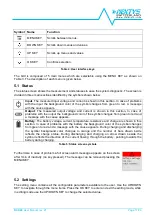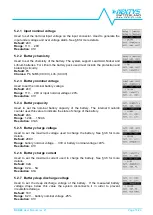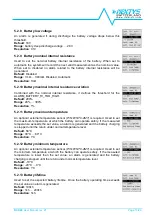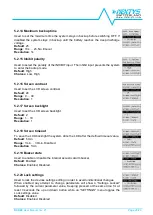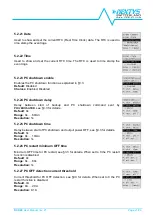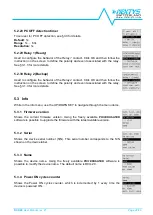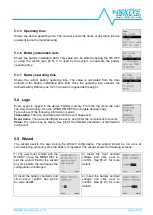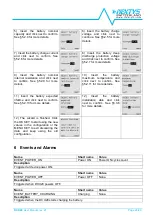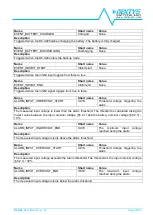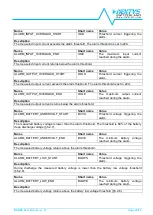
DCU20
User Manual rev. 21
Page 11/29
Temperature (T) measurement
: The battery temperature is monitored through an optional
temperature sensor (
P/N: WNTC-2MT
). The battery charger takes into account the battery
temperature and provides a temperature compensated charging voltage. In case of over
temperature the system disconnects the battery to prevent damage.
Coulomb counter
: It allows having a quick estimation of the remaining battery capacity
and consequently the available backup time.
Deep discharge protection
: It protects against the deep discharge of the battery which
can lead to its irreversible damage.
3.5 Battery resistance measurement
The battery
internal resistance
(Ri) is measured by injecting a defined AC current through a
constant
current source
(CCS) in the battery and measuring the AC voltage drop across the battery terminals.
The principle is represented in Figure 7.
The injected AC current I(AC) is flowing also through the connectors resistance -
“Rcables”.
Ri
+
-
Battery
Rcables
Constant
Current
Source
(CCS)
I(AC)
Figure 7: Internal resistance measurement
Without using the battery sense connection
as shown in Figure 9 the AC voltage drop is
measured across the battery connection terminals on the DCU20. The measured resistance will be in
this case:
Rmeasured=Ri+Rcables.
When high Ah batteries and / or small and long cables are used
Rcables
can be >
Ri
. Anyhow a connection problem as for example a loose contact can be detected by this
measurement method.
By using the battery sense connection
(a “Kelvin” type connection)
as shown in Figure 10 the
AC voltage drop is measured directly at the battery terminal. In this case the measured resistance is
exactly the battery internal resistance Ri
, independently on the cables length and size.
It is recommended to use this method to have an accurate reading of the battery internal resistance
and thus an accurate prediction of the battery health status.
If the battery sense cables length is > 2m it is recommended to twist the 2 wires together in order to
increase the noise immunity.
3.6 Battery charger
The battery charger supports
various chemistries
such Lead-Acid, Nickel, Lithium and every other
battery chemistry assuming that the charging voltage and charging current values are provided by the
battery manufacturer. The charging algorithm is shown on Figure 8. Other charging algorithms can be
implemented by request.
The user must set to the unit the following parameters to allow the charger to perform correctly:
Battery chemistry: selectable between Lead-Acid, Nickel, Lithium (see §5.2.2).
Battery nominal voltage: between 12V and 28V (see §5.2.3).

















